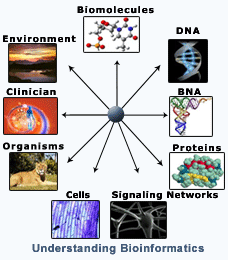|
|
Articles |
|
Web 2.0, a phrase is a cluster term for the new phase of World Wide Web, which was coined by O’Reilly and Media live International in 2003 and popularized by the first Web 2.0 conference in 2004. There is no certain definition of Web 2.0, even though; it stands for the transformation of the web into a full-fledged computing platform.
Web 2.0 is not a modified version of World Wide Web, but it is a different way to utilize Internet into web platform like
weblogs, social book marking, wikis,
podcasts, RSS feeds (and other forms of many-to-many publishing), social networking web, Web APIs, Web standards and online service provider. It is like open sourcing and genuine interactivity in which user can upload anything, download anything and can use the content according to its own wish. |
|
| more.... |
|
|
The term RIA (Rich Internet Applications) refers to web applications that have the features and functionality of traditional desktop applications, it means Rich Internet Applications are a cross between web applications and traditional desktop applications that shift some of the essential processing among the bulk of the data for the user interface to the Web client while rest of some remain on application server.
In the Rich Internet Application, the term stands for the broad range of media includes multiple fonts, vector and bitmap graphic files, animations, online conferencing, audio and video. It sooths to the eyes and the materials are more catchy due to its richness medium. e.g. any picture in the flash is more attractive than ordinary still picture.
|
|
|
| more.... |
|
| Web 3.0 |
Web 3.0 is a term, which definition is not confirmed or defined so far as several experts have given several meaning, which do not match to each other, but sometimes it is referred to as a Semantic Web. In the context of Semantic Web, Web 3.0 is an evolving extension of the World Wide Web in which web content can be expressed not only in natural language, but also in a form that can be understood, interpreted and used by software agents, thus permitting them to find, share and integrate information more easily.
Tim Berners-Lee, the inventor of first World Wide Web has coined the term Semantic Web. But the concept of Web 3.0, first entered among the public in 2001, when a story appeared in scientific article written by American Coauthored
Berners-Lee that described this term as a place where machines can read Web pages as much as humans read them e.g. web connected bathroom mirrors, which can read the news coming through on the web.
|
| more.... |
|
| Bioinformatics |
Bioinformatics With the confluence of biology and computer science, the computer applications of molecular biology are drawing a greater attention among the life science researchers and scientists these days. As it becomes imperative for biologists to seek the help of information technology professionals to accomplish the ever growing computational requirements of a host of exciting and needy biological problems, the synergy between modern biology and computer science is to blossom in the days to come. Thus the research scope for all the mathematical techniques and algorithms coupled with software programming languages, software development and deployment tools are to get a real boost. Additionally, information technologies such as databases, middleware, graphical user interface (GUI) design, distributed object computing, storage area networks (SAN), data compression, network and communication and remote management are all set to play a very critical role in taking forward the goals for which the Bioinformatics came into existence.
|
 |
|
| more.... |
|
|
|
|
|
|
|